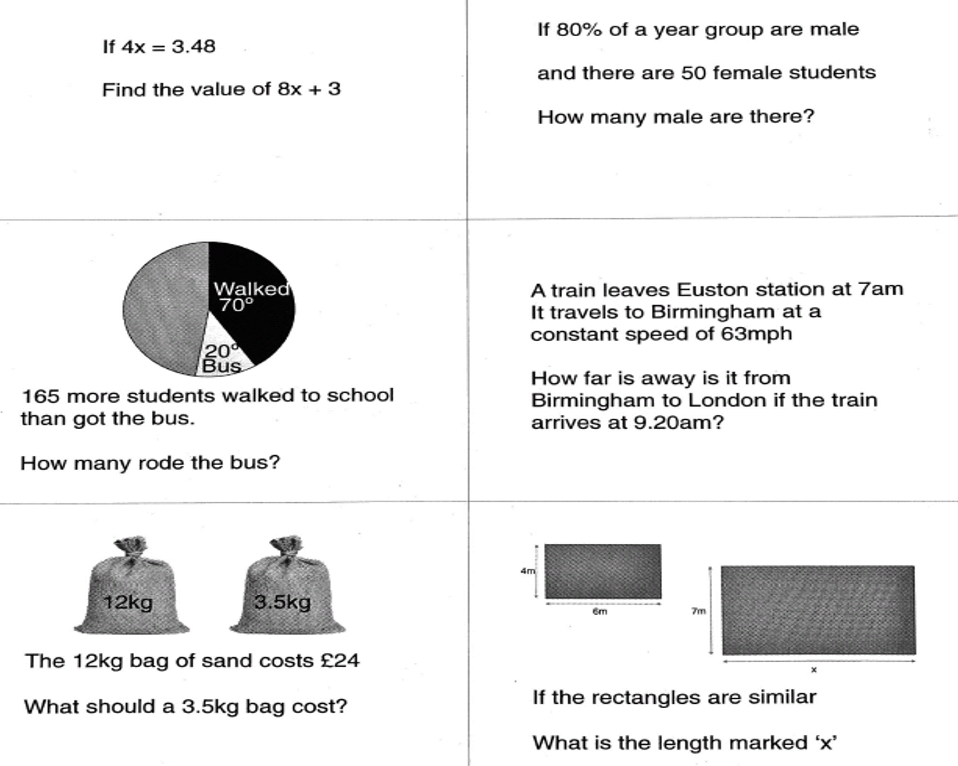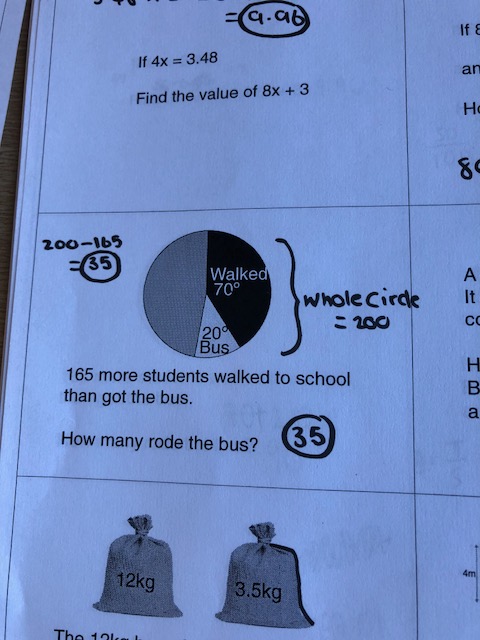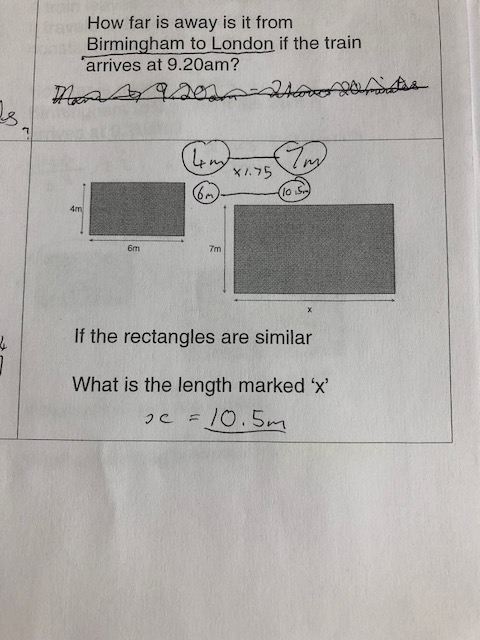Year 10 have just sat a mock paper and I was surprised how many questions that students made more complicated by how they answered them. Students seemed to opt for formula or find things they don’t need.
I picked out some of the types of questions students struggled with most (proportional reasoning questions) and created the following 6 questions. Here’s a pdf link if you want to try the questions with your class.


I gave the questions to a low attaining class, my own middle set class and a high attaining class to see how they each would fair. I then recorded how they answered the question and took photos of anything interesting. The percentage who answered correctly is shown for each group. The results are in order of low attaining, middle and high attaining classes. Below is a sample of some of the students responses…
I guess the next step is to look at how we can address the issues especially with middle and low attaining students. Avoid solely using ‘triangles’ and formula when teaching speed but let them see it proportionally. s=d/t might work for ‘find the average speed when you travel 145 miles in 5 hours’.
Students need to be exposed to the relationships in pie charts. if 50 degrees represent 165 people then 10 degrees represent 33 as well as 50 x 3.3 = 165 so 10 x 3.3 = 33
On the back of this exercise i created another resources for SDT
https://mathshko.wordpress.com/2018/02/06/speed-distance-time/


















Used the activity above a few times recently. It’s interesting when the students get to 4/5 of a number is 3 what’s 8 times my number. The can’t easily use a method such as finding 1/5 then 1 whole and multiply by 8 but if they recognise that 8 is 40/5 then it’s 30 because it’s 10 lots of 4/5 and 3.












An amazing amount of work here. I was particularly interested in one day sentence: “Students need to be exposed to the relationships in pie charts.”
I would like to build on this by suggesting that students need to be exposed to relationships in mathematics per se, both in terms of seeing connections and by deriving relationships between phenomena/variables. And this needs to be occurring in the first lesson that any teacher has with a new class, whatever age the students are. This is so they learn to think and behave mathematically.
Regards
Mike
LikeLike
Yes, i’m guilty of not doing this in the past, but im trying to change how i do things now
LikeLike